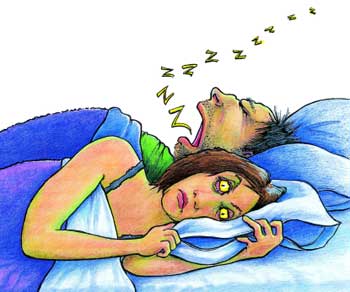Ptosis can affect one or both eyes and results from weakness affecting the muscles that raise the eyelid.
Ptosis can be congenital (you are born with it), or acquired (it develops during life).
Acquired ptosis can result from a variety of problems affecting the nerves, muscles, neuromuscular junction or tendons involved in elevating the eye lids.
Neurogenic ptosis is usually unilateral, and can be caused by a lesion affecting either the oculomotor nerve or the sympathetic nerve fibers to the eye (Horner’s syndrome).
When ptosis is caused by an oculomotor nerve lesion, there is generally also some degree of eye movement abnormality (ophthalmoparesis). Oculomotor nerve palsy can be caused by something as simple as diabetes, but if the nerve fibers to the pupil are involved (causing a dilated pupil in addition to the ptosis and ophthalmoparesis), that is very suggestive of a compressive lesion such as an aneurysm (see below) and warrants immediate evaluation.

R ptosis, oculomotor palsy (eye is deviated down and outwards), with a dilated unreactive pupil, caused by nerve compression from aneurysm (red arrow)
Horner’s syndrome causes mild ptosis associated with a small pupil (miosis) sometimes associated with lack of sweating (anhidrosis) on the face, and can be caused by trauma to the carotid artery, lung tumors, or strokes.
Myasthenia gravis is an autoimmune disease that affects the neuromuscular junction, and frequently presents with fatiguable ptosis often associated with double vision and limb weakness. The ptosis will usually get worse when the patients is tired at the end of the day (diurnal variation):
The ptosis of myasthenia can be temporarily improved with an acetylcholinesterase inhibitor medication, such as an injection of edrophonium (Tensilon), and this can used a diagnostic test.
Ptosis can also be seen in certain muscle diseases, including oculopharyngeal muscular dystrophy, mitochondrial myopathy and myotonic dystrophy.
However, acquired ptosis is most commonly caused by dehiscence or disinsertion of the levator aponeurosis, causing a disconnection between the eye lid and the elevating muscles.
This usually occurs in elderly patients, but can sometimes affect younger contact lens users.

L ptosis from levator dehiscence – Note that when the eye is closed, the lid crease is fainter and further away from the lid margin in the left eye, compared to the right eye
Patients who notice a drooping eyelid, unequal pupils, or double vision should consult with a neurologist in order to establish the correct diagnosis.
After that, treatment might include medical therapy for an underlying disorder (such as diabetes or myasthenia), surgery or even eye lid crutches:





































